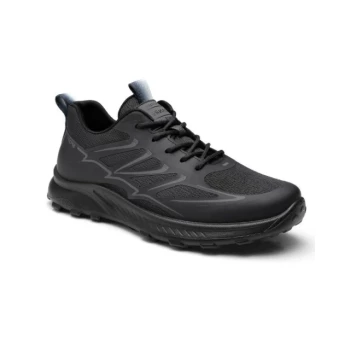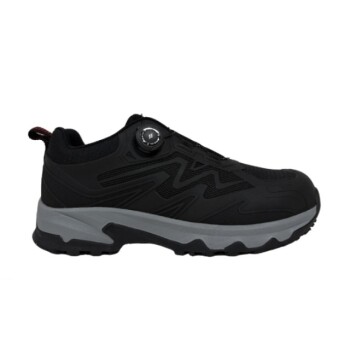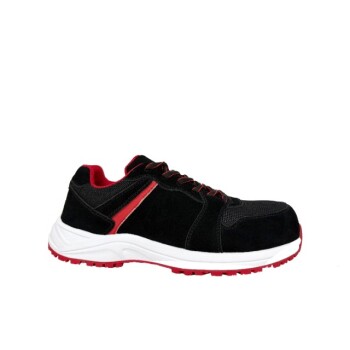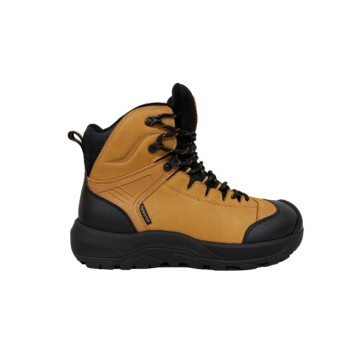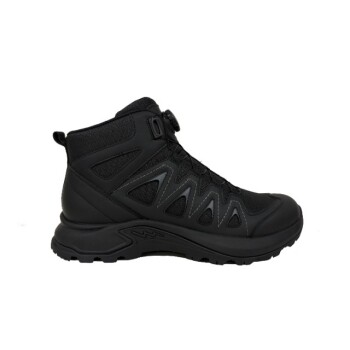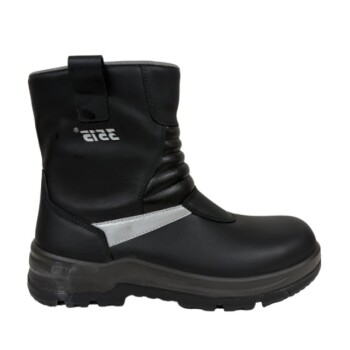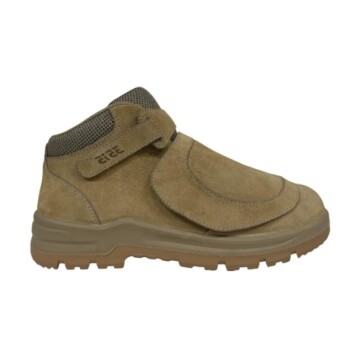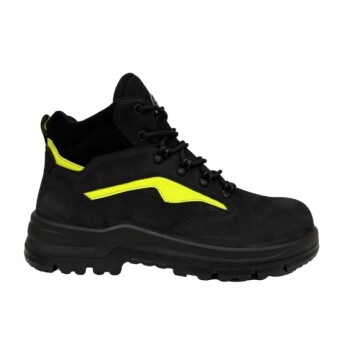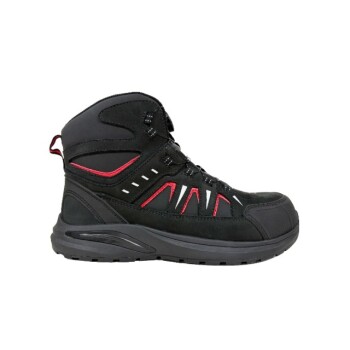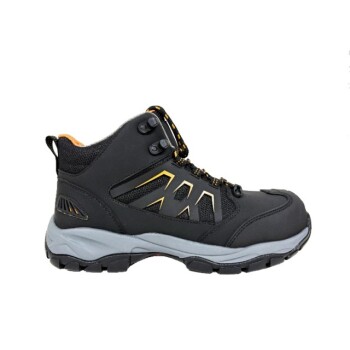To properly condition leather work boots, you must first clean and thoroughly air-dry them. Then, apply a suitable leather conditioner with a soft cloth, working it gently into the entire surface. After letting the conditioner absorb for several minutes, you simply wipe away any excess with a clean, dry cloth.
The core principle of boot care is that conditioning is not a standalone task. It is the vital final step that follows a thorough cleaning, designed to replenish the leather's natural oils and prevent it from drying, cracking, and failing prematurely.
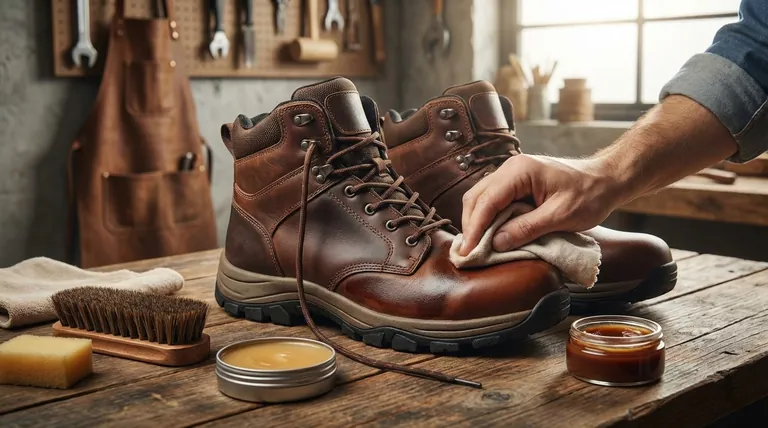
Why Conditioning Is Non-Negotiable
Conditioning is the most critical step for extending the life of your leather boots. Leather is a natural material that contains oils, and these oils are what keep it flexible, strong, and water-resistant.
It Prevents Drying and Cracking
Daily wear, exposure to dirt, and cycles of getting wet and drying out strip the natural oils from the leather. Without them, the fibers become brittle, leading to cracks and permanent damage.
It Restores Essential Oils
A good conditioner penetrates the leather's pores to replenish the oils that have been lost. This nourishment is what keeps the material supple and resilient against stress.
It Maintains Appearance and Flexibility
Well-conditioned leather maintains its color and a healthy sheen. More importantly, it stays flexible, ensuring the boots remain comfortable and move with your feet rather than fighting against them.
The Step-by-Step Conditioning Process
Follow these steps precisely. Skipping the preparation stages will trap dirt and grime in the leather, doing more harm than good.
Step 1: Prepare the Boots
First, remove the laces and any removable insoles. Bang the boots together to knock off loose dirt and mud. Then, use a soft-bristled brush to remove any remaining surface debris.
Step 2: Perform a Thorough Cleaning
Wipe the entire boot down with a damp cloth. For tougher stains or ground-in dirt, use a dedicated leather cleaner or a solution of mild dish soap and water, scrubbing gently with your brush.
Step 3: Ensure They Are Completely Dry
Let the boots air-dry completely at room temperature. Never use a direct heat source like a radiator or hairdryer, as this can shrink the leather and cause it to crack.
Step 4: Apply the Conditioner
Put a small amount of conditioner on a clean, soft cloth. Apply it to the leather in gentle, circular motions, ensuring you cover the entire surface, paying special attention to seams and creases.
Step 5: Allow for Absorption
Let the boots sit for several minutes to allow the leather to absorb the conditioner fully. The time will vary by product, but 15-30 minutes is a good starting point.
Step 6: Remove the Excess
Using a second clean, dry cloth, buff the boots to remove any remaining surface residue. This prevents the boots from feeling greasy and attracting excess dirt.
Common Pitfalls to Avoid
The goal is to nourish the leather, not damage it. Avoiding these common mistakes is as important as the conditioning process itself.
Conditioning Over Dirt
Applying conditioner to dirty boots grinds the abrasive particles deeper into the leather's pores, accelerating wear and tear. Always clean first.
Using the Wrong Products
Avoid harsh chemical cleaners containing bleach or ammonia. For conditioners, steer clear of products based on mineral oil or petroleum, which can clog the leather's pores and ultimately dry it out.
Applying Too Much Conditioner
Over-oiling or using too much conditioner can make the leather feel greasy and attract more dirt. A thin, even coat is all that is required.
Forgetting to Test First
Different conditioners can slightly alter the color or finish of the leather. Always test a new product on a small, inconspicuous area of the boot first, like the tongue or inner ankle.
Making the Right Choice for Your Goal
Your approach to conditioning can be tailored to your primary objective.
- If your primary focus is maximum longevity: Condition your boots regularly, especially after they have been heavily soiled or exposed to wet conditions.
- If your primary focus is preserving appearance: Always test new products and apply conditioner sparingly to avoid significantly darkening the leather.
- If your primary focus is performance in harsh weather: Choose a conditioner with natural waxes or oils like beeswax or mink oil, and follow up with a dedicated waterproofing product.
Proper conditioning is the single most effective way to protect your investment and ensure your boots perform for years to come.
Summary Table:
| Key Step | Purpose | Key Tip |
|---|---|---|
| Clean First | Remove dirt and grime to prevent damage. | Never condition over dirt. |
| Air Dry Completely | Prevent leather from shrinking and cracking. | Avoid direct heat sources. |
| Apply Conditioner | Replenish natural oils to keep leather supple. | Use a soft cloth and circular motions. |
| Buff Off Excess | Prevent a greasy feel and attract less dirt. | Use a clean, dry cloth. |
Invest in boots built to last. As a large-scale manufacturer, 3515 produces a comprehensive range of durable leather work boots for distributors, brand owners, and bulk clients. Our expertise ensures every pair is crafted for maximum longevity. Let's discuss how our production capabilities can meet your specific needs.
Contact 3515 today for a quote
Visual Guide
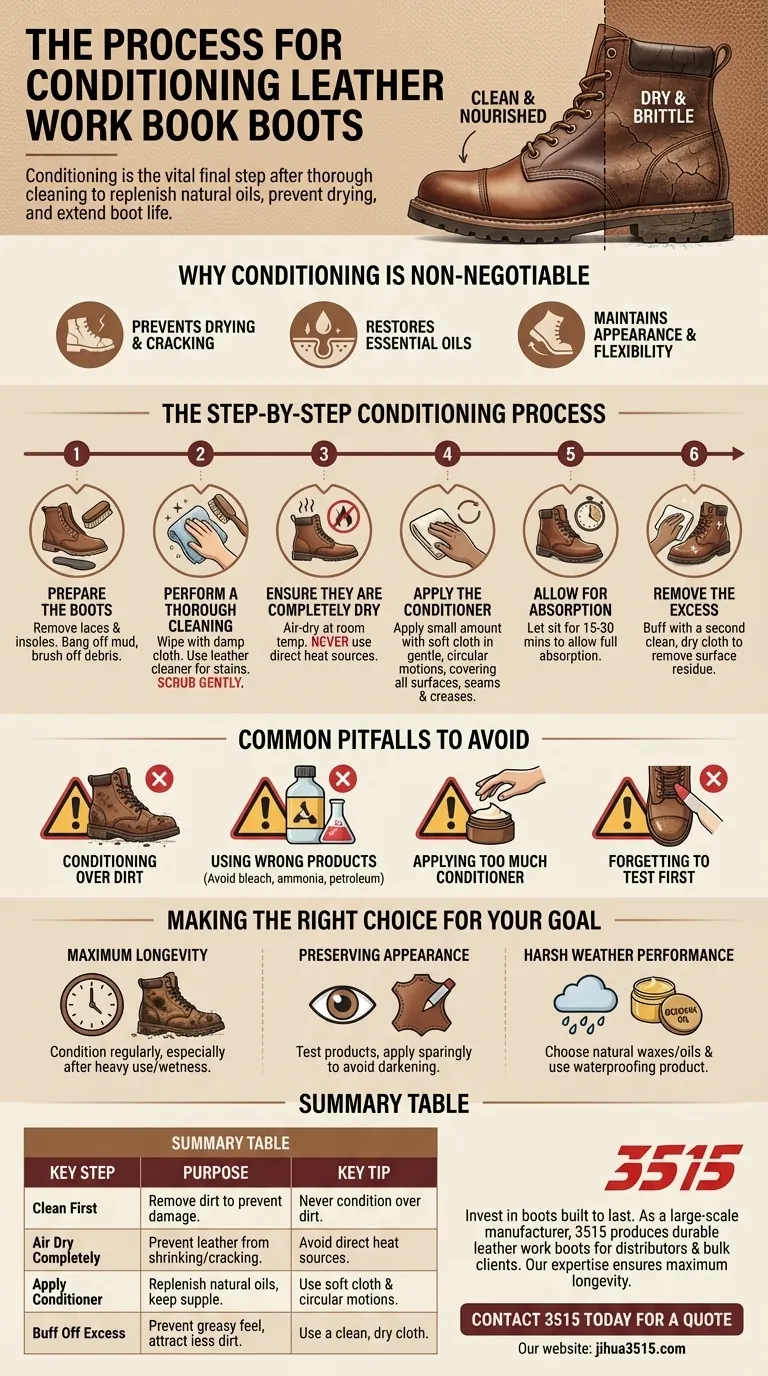
Related Products
- Safety Footwear Wholesale Manufacturer for Custom OEM/ODM Production
- Durable Leather Safety Boots for Wholesale & Custom OEM Manufacturing
- Custom OEM Training Shoes Wholesale Manufacturer Durable & Breathable
- Advanced KPU Athletic Safety Shoe with Steel Toe Cap Anti-Slip Rotary Lacing System
- Premium Suede Sport Safety Shoes for Wholesale & Bulk Orders
People Also Ask
- Do snake bite boots work? Your Ultimate Guide to Effective Snake Bite Protection
- What do heavy duty boots do? Protect Your Feet in Demanding Work Environments
- Is it normal to wear shoes in the house? A Guide to Hygiene, Comfort & Culture
- Is safety-toe as good as steel toe? Choose the Right Protection for Your Job
- What cultural and environmental considerations are tied to wearing shoes indoors? Balance Hygiene, Tradition, and Foot Health


